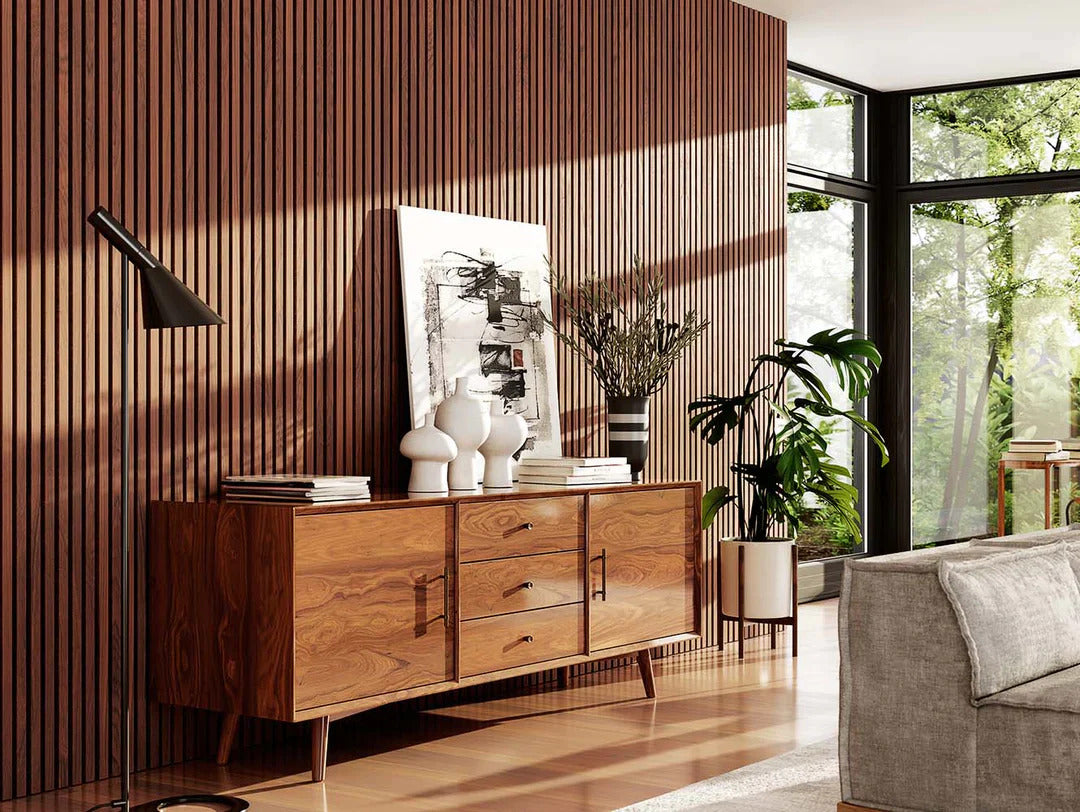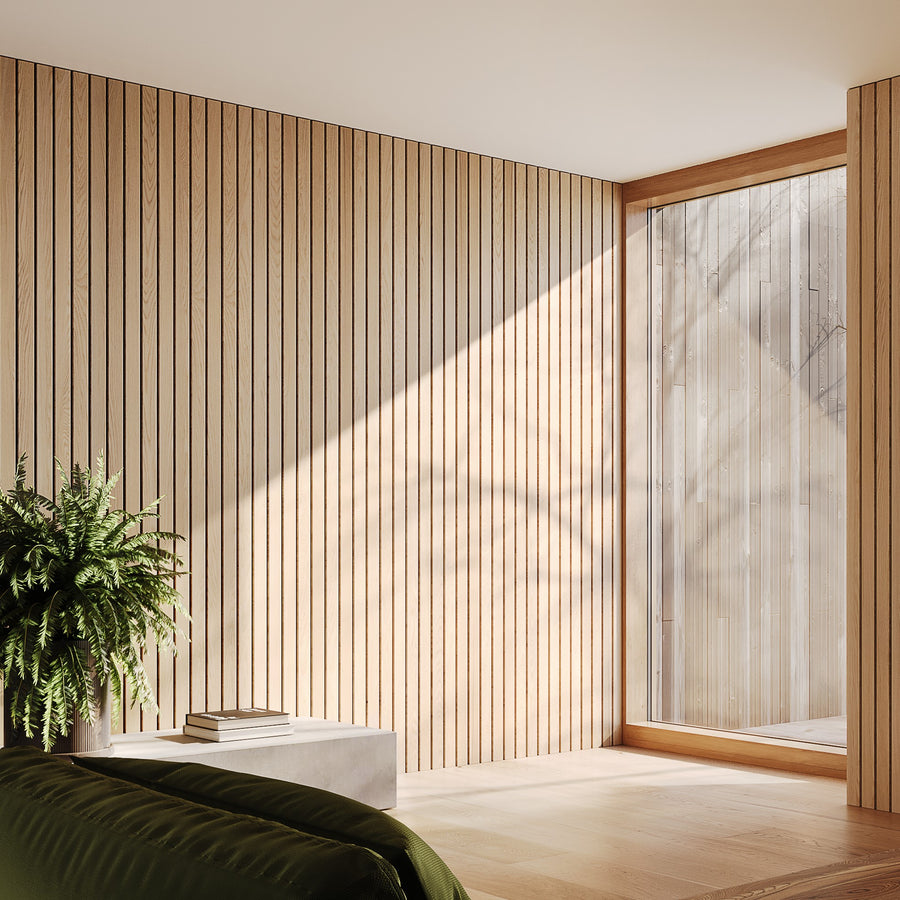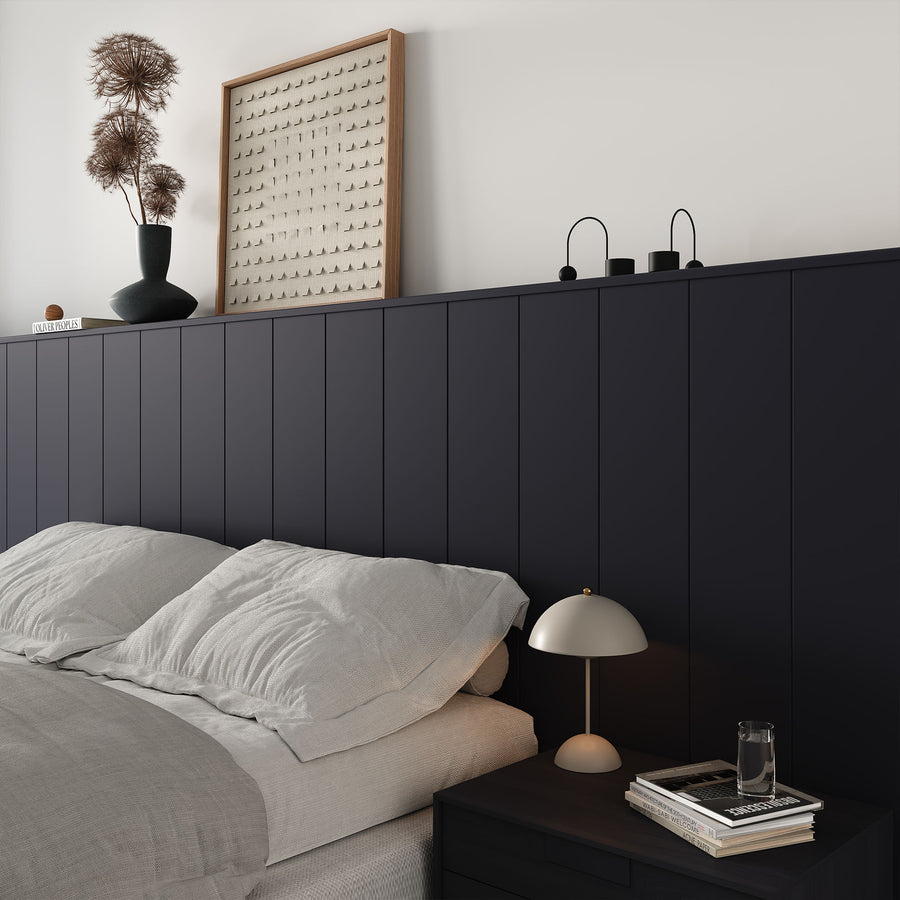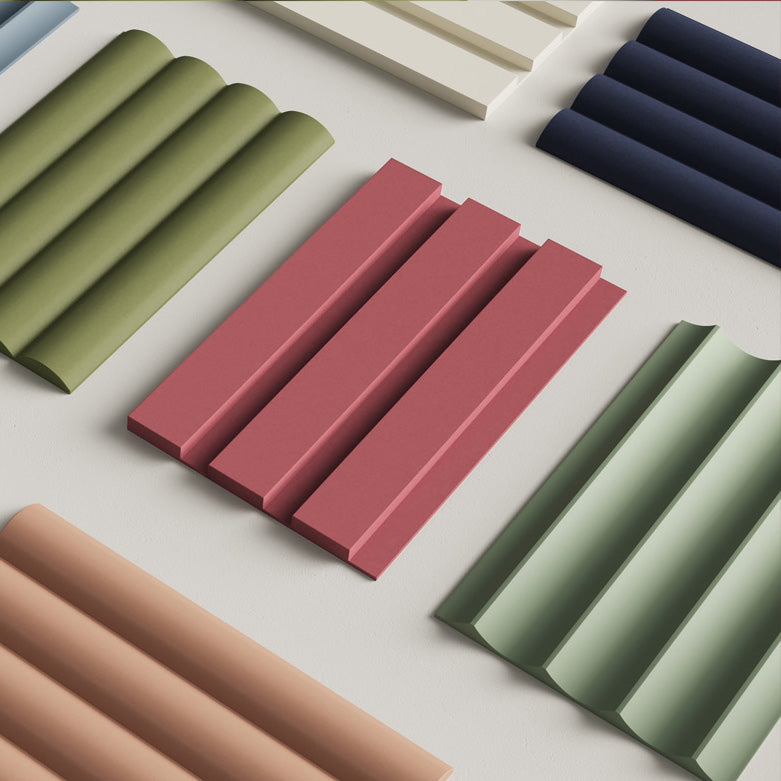The 5 Easiest Ways to Cover Holes in Your Wall

Walls may be the blank canvas of our homes, but over time, they often accumulate dents, nail holes, and other imperfections.
Repairing them doesn’t have to mean messy spackle or costly professional help. Thankfully, there are easy and stylish solutions to refresh your space while hiding the flaws.
This guide highlights five simple ways to cover wall holes with creativity and elegance. Wallpaper offers endless design possibilities to conceal imperfections, while paintable wall panels provide durability and a custom finish.
For a modern, textured look, wood slat panels add warmth and sophistication. Upholstered walls bring a luxurious touch, ideal for disguising larger damage, and decorative art or mirrors provide quick, impactful fixes that double as statement pieces.
If you’ve been wondering how to cover holes in wall, these ideas will not only hide damage but also enhance your space, making your walls look better than ever.
Determining the Size Before You Cover Wall Holes
Before diving into the creative methods to cover wall holes, it’s essential to evaluate the size and severity of the damage.
Not all holes are created equal — some require quick fixes, while others need more substantial solutions. By understanding the extent of the damage, you’ll save time, effort, and resources by choosing the right approach upfront.
Small Holes
Small holes from nails, thumbtacks, and screws are the most common types of wall damage and are usually no bigger than the tip of a pencil.
If you’ve recently removed picture frames or hooks, these tiny imperfections can be easily covered with lightweight spackling paste.
Smooth it over with a putty knife, let it dry, and sand lightly for a flawless finish. Once patched, you can paint over the area or use wallpaper to disguise it further.
Medium Holes
Medium-sized holes from TV mounts and shelving units are often left behind after removing TV mounts, shelving brackets, or other wall installations.
These can be slightly more challenging, as the damage is too large for simple spackle but not extensive enough for full wall reconstruction.
For this, a new drywall is your best friend. These can be placed over the hole, followed by applying compound for a smooth surface. Once dry, sand and paint to blend the repair seamlessly.
If you’re in a hurry, a quick coat of matching paint can also work as a temporary solution until you’re ready for a more permanent fix.
Alternatively, medium-sized holes can be easily concealed with decorative art, such as a large framed painting or mirror, as discussed in this blog.
Replacing Large Pieces of Drywall for Severe Damage
Step 1: Assess and Mark the Area
Step 2: Cut Out the Damaged Section
Step 3: Measure and Cut a New Drywall Patch
Step 4: Attach the Drywall Patch
Step 5: Tape and Mud the Seams
Step 6: Sand and Repeat
Step 7: Prime and Paint
When to Skip the Drywall Replacement
1. Using Wallpaper to Cover Wall Holes
Wallpaper is a fantastic solution for covering wall holes while transforming the aesthetic of your space.
Unlike paint, wallpaper offers texture and patterns that can distract the eye from imperfections. If you’re dealing with small holes, there’s no need for extensive patchwork; high-quality, thick wallpaper can mask them entirely.
Wallpaper comes in an incredible variety of designs, from modern geometrics to timeless florals.
Peel-and-stick options are particularly popular for renters or those wanting a temporary fix. These easy-to-apply wallpapers let you refresh your walls without the commitment of glue or paste.
For the best results, clean the wall surface and lightly sand down uneven areas before applying. Small holes and dents can be smoothed out with a quick layer of filler if needed.
The result? A flawless-looking wall that hides the damage and adds character to your room. Whether you’re aiming for subtle texture or bold design, wallpaper is a practical and stylish way to cover wall holes with ease.
2. Paintable Wall Panels to Cover Wall Holes
Paintable wall panels, like the fluted panels featured in this image, are an elegant and practical solution for damaged walls.
Fluted panels, characterized by their vertical grooves, bring a refined texture that adds depth and sophistication to any space.
Historically, similar designs were seen in Art Deco and mid-century architecture, celebrated for their clean, linear aesthetics. Today, fluted panels are making a strong comeback, blending classic charm with modern minimalism.
In this bedroom, the white fluted panels create a calm and cohesive backdrop, perfectly complementing the upholstered headboard and crisp bedding.
Their vertical grooves not only draw the eye upward, making the room feel taller, but also effectively disguise imperfections such as large holes or uneven surfaces. For anyone wondering how to cover holes in wall, fluted panels provide both functionality and style.
The panels’ paintable surface makes them highly customizable, allowing you to match or contrast with your room’s decor.
Whether you keep them neutral, as shown here, or opt for a bold color to make a statement, fluted panels are a durable and visually striking way to cover wall holes.
Easy to install with adhesive or screws, these panels offer a timeless solution that transforms walls into design features.
3. Using Wood Slat Panels to Cover Wall Holes

Then there are the wood slat panels which are a perfect solution for covering wall holes while adding natural warmth and texture to your space.
These panels, characterized by their evenly spaced vertical slats, draw inspiration from Scandinavian and mid-century modern design, styles celebrated for their clean lines and functional elegance.
Historically, wood paneling was a staple in mid-century homes, and its resurgence today highlights its timeless appeal.
In this room, the rich walnut finish of the slat panels complements the mid-century-inspired console table, with its sleek tapered legs and warm wood tones.
The pairing exudes sophistication and offers a harmonious connection to the natural light streaming through the expansive windows.
The subtle shadows cast by the slats further enhance the wall’s visual interest, making it a focal point without overwhelming the space.
Budget Tips: While high-quality wood slat panels like these can be an investment, affordable alternatives like DIY slats using pine or MDF are available for those on a budget. Consider this option if you're aiming to create a similar aesthetic without overspending.
Combine this approach with tips from earlier sections, such as pairing the wood with complementary paintable wall panels or using minimalist decor to let the slats take center stage.
Installation is simple enough for a DIY enthusiast: secure the slats directly to the wall using nails or adhesive.
Whether placed in a living room, hallway, or bedroom, wood slat panels are not just a solution for how to cover holes in wall; they also elevate your interiors, offering both style and substance.
4. Using Fabric Panels or Upholstered Walls
Upholstered panel walls, like the ones in this image, are the perfect way to cover wall holes while dialing up the cozy factor in your home.
These padded beauties, made from foam backing wrapped in fabric, bring both style and substance to your space.
Once a staple in Victorian-era mansions (because soundproofing was classy back then), upholstered walls are having a major revival. Now, they’re the go-to for anyone wanting to combine practicality with a touch of modern luxury.
Here, the neutral beige panels create a soft, quilted effect that practically begs you to sink into the room.
They do more than look good — they absorb sound, making them ideal for living rooms, bedrooms, or even a home theater. And let’s not overlook the sculptural lounge chair or the natural wood flooring that keeps the vibe relaxed yet sophisticated.
Want this look? Start small with an accent wall or go big for that wow factor.
You can install the panels using adhesive or mounting strips, and with fabric options like linen or velvet, the possibilities are endless.
Whether you’re dealing with small imperfections or bigger dents, upholstered walls aren’t just about how to cover holes in wall — they’re about turning those flaws into a design statement.
5. Using Decorative Art to Cover Wall Holes
Decorative art, like the oversized abstract painting shown here, is one of the most effective and stylish ways to cover wall holes.
This piece not only conceals imperfections but transforms the wall into a gallery-worthy focal point.
Abstract art, with its fluid forms and textured strokes, became a modern art movement in the early 20th century, championed by artists like Kandinsky and Rothko.
Its timeless appeal lies in its ability to complement various interior styles, from contemporary minimalism to traditional elegance.
The painting’s muted tones harmonize beautifully with the surrounding architectural details, such as the classic wall molding.
Molding, a staple of Georgian interiors, was historically used to frame walls and add grandeur to spaces. In this setup, it accentuates the artwork and provides a subtle nod to historical craftsmanship while blending seamlessly with modern design.
The furniture pieces also upgrade the room’s aesthetic. The curvaceous boucle armchair, a modern favorite, offers a tactile softness that contrasts with the geometric lines of the wooden side table.
Boucle fabric, originally popular in mid-century designs, has re-emerged as a top trend, adding warmth and texture to interiors. The wooden table with its sculptural base grounds the room in natural elements, adding a touch of organic elegance.
Tips for Recreating This Look
Artwork Selection
Choose a piece large enough to fully cover the holes while enhancing the wall’s proportions. Abstract or landscape paintings work particularly well for this purpose.
Installation
Use wall anchors for secure mounting, especially for heavier art pieces. Ensure the piece hangs at eye level for maximum impact.
Coordination
Pair the artwork with surrounding decor that complements its colors and style. Here, the neutral palette ties the room together, while the molding and boucle chair add layers of texture and history.
Decorative art doesn’t just solve the problem of how to cover wall holes—it turns it into an opportunity to showcase personal style while blending timeless elements with modern trends.
Conclusion
Covering wall holes doesn’t have to be a frustrating chore. With these five easy and stylish solutions, you can hide imperfections while improving your interior design.
Whether you opt for the textured appeal of wallpaper, the durability of paintable wall panels, or the modern elegance of wood slat panels, there’s a solution to fit every home and style.
And for those looking for a quick fix, mirrors and decorative art offer a fast and creative way to address the issue.
So, the next time you find yourself wondering how to cover holes in wall, remember these ideas. Not only will they help you cover wall holes, but they’ll also give your room a fresh, polished look that you’ll love.
















































Leave a comment